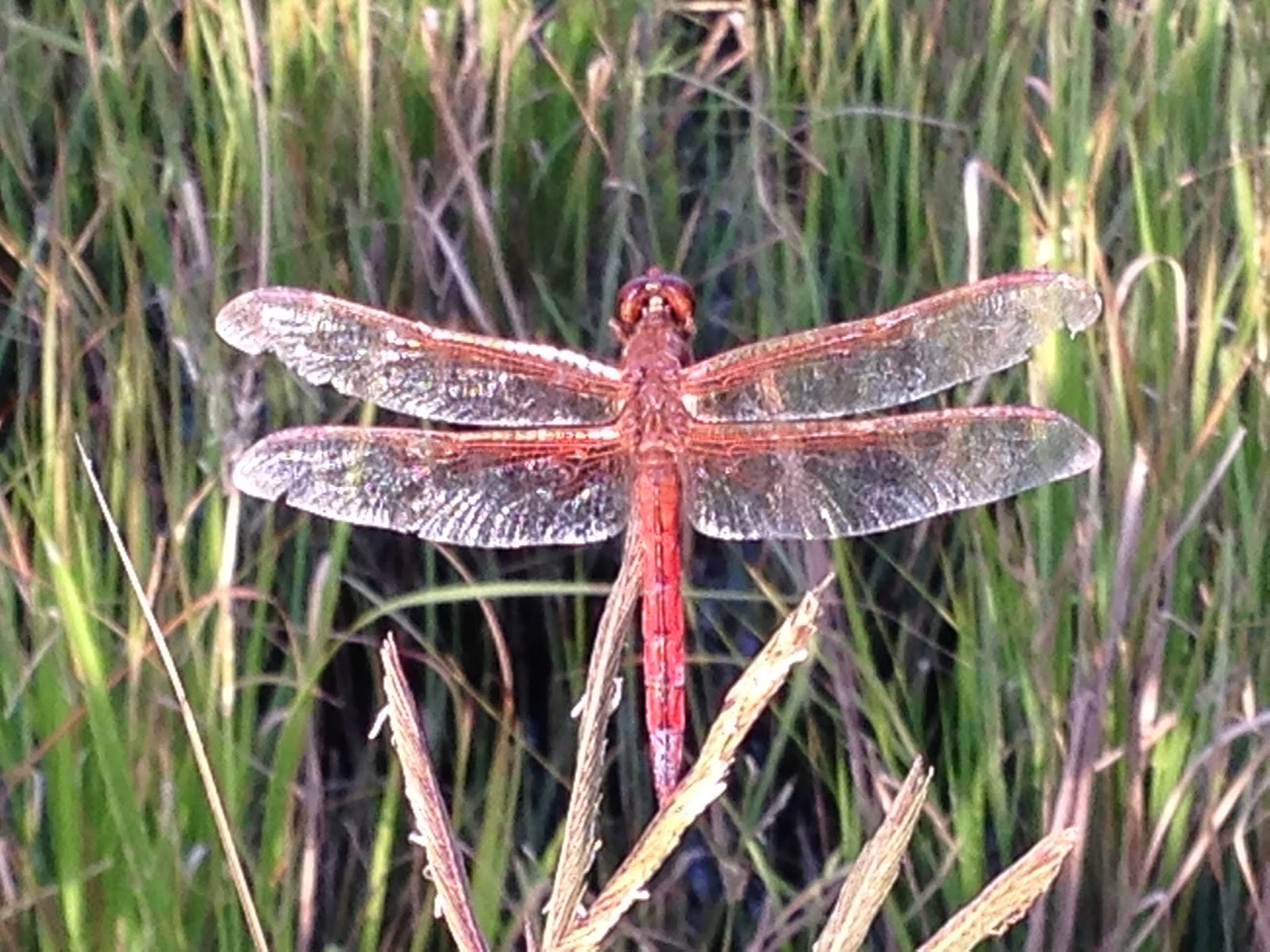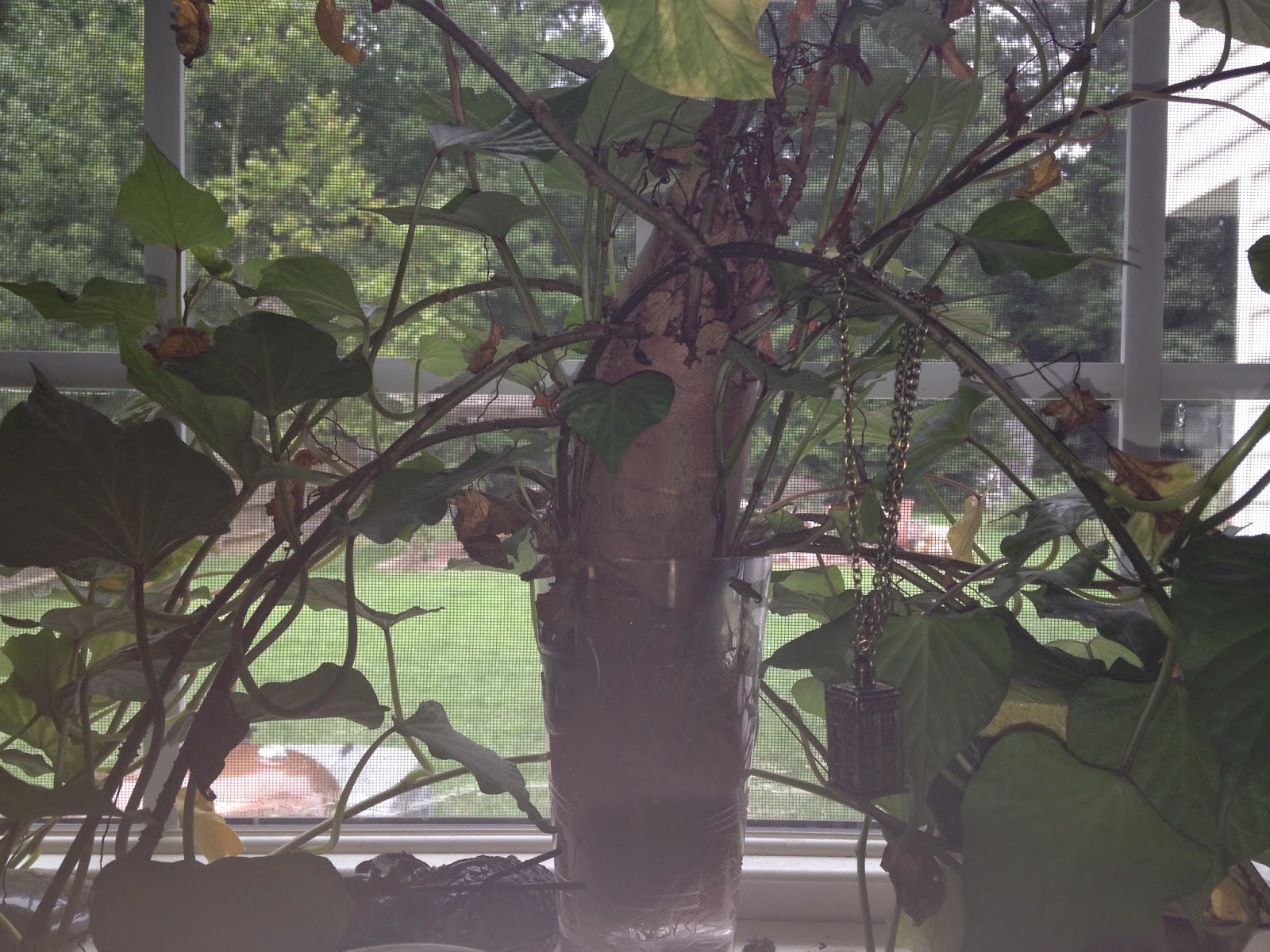in ecology a niche is the role that a certain organism plays in its environment. For example a trees niche is that it provides shade for surrounding animals, it absorbs the sunlight and creates oxygen, and it provides a home for insects and birds.
Saturday, August 30, 2014
Mutualism
Humans have thousand upon thousands of bacteria inside out intestinal tracts that help us digest our food. This kind of relationship is known as mutualism, a relationship where organisms of two different species benefit from each other. Other examples of this kind of relationship include flowers and bees, orchids and mycorrizae, and the zebra and the ox pecker.
Eubacteria
This small section of the desk top holds thousands of bacteria, and all of them can classified as eubacteria. Eubacteria are prokaryotic organisms, meaning they do not have a nucleus. These bacteria can be found on everything we touch, eat, drink, and they are even inside of us, helping us digest our food. But, these bacteria can also kill a lot of people if we are not careful.
Vestigial Structures
A vestigial structure is any part of the body that has lost its original function over time because of evolution. Human body is a good example of a vestigial structure because it is not a needed or used part of the human body. Other examples of vestigial structures include the appendix, tonsils, ear muscles, and male nipples.
Friday, August 29, 2014
Littoral Zone Organism
The Littoral Zone is the part of the ocean, river, or in this case lake, that is close to the shore and in many cases is not always covered in water due to the changing tides. These snails are a good example because they can be found on the muddy banks of Queen Lake and climbing up the tall grass in the creek. These organisms are special because they are able to survive both in and out of the water with ease. Other examples of Littoral zone organisms include starfish, sand dollars, flowers, tall grasses, and crabs.
Genetically Modified Organisms
Tomatoes were often genetically modified in order to let them ripen on the plant before picking them so that they can reach their full flavor, before they were genetically modified they were picked while they were still green and then ripened artificially. There are many genetically modified organisms that we eat and see today, including corn, soybeans, ingredients in baby food, and even chocolate.
Asexual reproduction
No bread does not reproduce, but the yeast in bread does reproduce asexually. Asexual reproduction happens through the process of mitosis and the daughter cell is an identical copy of the parent cell. All single-celled organisms reproduce asexually and some more complex organisms like jellyfish, starfish, and some sea sponges do also.
Hermaphrodites
Most sponges are hermaphrodites, meaning they have both male and female sex organs. obviously this kitchen sponge cannot reproduce with another sponge, but sea sponges can. The process of reproduction is strange as the sponge will often release sperm into the water which will then meet with an egg, or it will travel into another sponge and meet with the egg there.
(Note: The T.A.R.D.I.S., aka my original proof item has been lost, i will try to find it, but for now i will use my ring)
Mating Behavior
As you can see in the photo above the male grasshopper (the small green one) is on top of the female grasshopper (the large brown one) and they are mating. There are a lot of different types of mating behavior in animals including monogamy, polygamy, polygyny, and polyandry.
Thursday, August 28, 2014
Endotherm
All mammals, birds, and some fish are endothermic, meaning they create their own heat. They create their own heat incidentally as a result of their internal body functions. Sometimes though we cannot create enough heat in extreme cold, or we become too hot in extreme heat, that is where shivering and sweat come in. Endotherms are also known as warm-blooded, the opposite of ectotherms, who cannot create their own heat, and are known as cold-blooded.
Modified Leaf of a Plant
If you look closely at the leaves in this picture you will see things called tendrils sticking out from the leaves. These tendrils are meant to help the plant climb like this vine is doing. tendrils can be found on many plants including pea plants, squash and cucumber plants, and pitcher plants.
Eukaryotes
The beetle in this picture is an example of a eukaryotic organism. A eukaryotic organism or cell is any cell that has a nucleus. All plants and animals are classified as eukaryotes as they have nuclei, and complex tissues, and cell organelles. Almost all microorganisms on the other hand are classified as prokaryotes because they do not have a nuclei or cell organelles.
Heterotrophs
A heterotoph is an organism that cannot create its own food and has to rely on other plants and animals for its food (energy) source. Anything that is not an autotroph is a heterotroph, so all organisms that are not classified as plants are therefore heterotrophs. Heterotrophs are always secondary, tertiary, or higher up on the food chain.
Autotrophs
This plant is an example is an autotroph. An autotroph is an organism that creates it's own food through photosynthesis, so all plants are autotrophs, with the exclusion of carnivorous plants. Autotrophs make their own food by using the carbon dioxide in the air and sunlight to fuel chemical reactions and create their own energy (food) source.
Ethylene
Ethylene is a naturally occurring, flammable gas that is used to ripen fruit. But, it is also used commercially to ripen fruits faster after they have been picked. Although it can be used for good things, like ripening fruit, it can also destroy crops so it is important to control how it is used.
Gymnosperm Cone
Unlike in angiosperms, the seeds in gymnosperms are not enclosed in a n ovary, this is called a "naked seed". There are many different types of gymnosperms including cyads, ginetales, ginkos, and conifers like the one you see here. This is most likely a female gymnosperm cone as is it large, female gymnosperms are usually larger and grow farther down the tree, the female cone create seeds. The male cone produce pollen and are smaller and higher up in the tree.
Wednesday, August 27, 2014
Bilateral Symmetry
This dragon fly is a great example of bilateral symmetry in animals because if you cut it in half right down the middle and folded it over it would look the exact same on both sides.
(note: There is no proof item in the picture because i did not have it on me when i found the dragon fly, i can assure you it is my picture)
Homologous Structures
A good example of a homologous structure is the tail bone in humans and in dogs. It is a good example because the tailbone in humans is very structurally similar to that of the tailbone in dogs, the only difference is that our tailbone has become a vestigial structure. Dogs still have their tail making their tailbone a needed structure.
Long Day Plant
A long day plant is a plant that flowers only after it is exposed to a certain amount of light. This patch of Clover is an example of a long day plant because it thrives when it surpasses the typical amount of sunlight that it needs to survive. Other examples of long day plants include spinach, lettuce, carnations, and most other flowering plants.
Meristem
A Meristem is defined as an area of plant tissue that contains actively dividing cells that form new tissue. The top of this onion is a great example of a Meristem because it does exactly that, it's cells divide actively to form new tissue. You find a Meristem at the tips and roots of most plants. The Meristem cells give way to all of the organs found inside a plant including the leaves, flowers, and 'branches'.
C3 Plant
This sweet potato that my grandmother stuck in a jar in my kitchen is an example of a C3 plant. A C3 plant is a plant that uses only the C3 pathway in photosynthesis. They use the Calvin cycle to fix carbon dioxide. They are very common as they make up 95% of all plant species. C3 plants thrive in areas with a moderate temperature and light, with lots of ground water, which makes the potato a perfect example of a C3 plant.
Tuesday, August 26, 2014
Seed Dispersal
Water is used for many things including drinking, cooking, cooking bathing, doing the ALS Ice-Bucket challenge, and for seed dispersal. Plants produce seeds for reproduction that have to be dispersed so that they can plant themselves down and eventually grow, this happens is many different ways, whether the seeds latch onto animals, get carried by the wind, or get carried downstream.
(Proof object is in the top centerish of the picture.)
Hydrophillic
Hydrophillic substances are described as water loving substances and are any substance that can be dissolved in or mixed with water, or any substance that can be wetted by water, unlike oils. Sugar is one of the common examples of a hydrophillic substance because it dissolves easily in water and used everyday. Hydrophillic substances are polar and ionic causing them to be attracted to water, which allows them to dissolve or absorb water.
Introduced Species
This Kudzu is a great example of an introduced species. An introduced species is a species of that is not native to the land that they now inhabit, they can be introduced in many different ways whether by accident or on purpose. Kudzu was introduced on purpose, it was brought over from Japan to help control erosion and for feeding of cattle. it is also an example of a highly invasive species, as it is not easily controlled and can literally grow a foot a day. Other examples of introduced species in the United States include: peaches, the brown rat, the house sparrow, and dandelions.
Hydrophobic
Hydrophobic substances are substances that do not mix well with water and do not dissolve in water, like oils, fats, and other greasy substances. Hydrophobic substances are NOT characterized by repulsion from the water as they are non-polar, instead it is a complete absence of attraction that makes them hydrophobic. Many hydrophobic substances are used for the removal of oil in water in major oil spills.
Dominant vs Recessive phenotype
Dominant and recessive traits describe how likely it is for a person or other sexually reproductive animal is to receive or pass on certain traits.Anything from eye color to foot size can be inherited from parents, but what you do end up inheriting depends on the parents genes The dominant and recessive phenotypes are the physical, observable traits. For example, the girl to the far left of this photo shows a mix of dominant and recessive traits, she has light eyes (recessive) and naturally dark hair (dominant). While the girl to the far right has mostly recessive traits with light hair and light eyes, the guy in the middle shows mostly dominant trait with dark hair and eyes.
Subscribe to:
Comments (Atom)

























